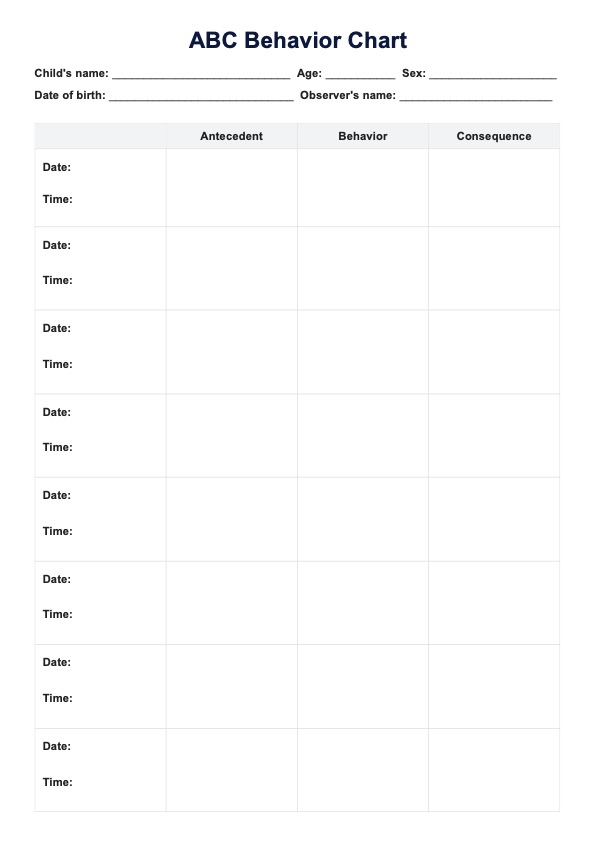ABC stands for Antecedent, Behavior, and Consequence. It serves as a framework for understanding the relationship between events that occur before a behavior, the behavior itself, and the outcomes that follow it.

Learn about how one can use the ABC behavior chart to understand the behavior of children with developmental disabilities.
ABC stands for Antecedent, Behavior, and Consequence. It serves as a framework for understanding the relationship between events that occur before a behavior, the behavior itself, and the outcomes that follow it.
The ABC model in behavior therapy is a systematic approach used to analyze behaviors by identifying the antecedents that trigger them, the behaviors themselves, and the consequences that reinforce or discourage those behaviors. This model helps in understanding and modifying behaviors effectively.
In the ABC chart, a behavior refers to any observable action or response exhibited by an individual, which is analyzed in the context of the antecedents that precede it and the consequences that follow it. This analysis aids in identifying patterns and potential interventions for behavior modification.
EHR and practice management software
*No credit card required
Free
$0/usd
Unlimited clients
Telehealth
1GB of storage
Client portal text
Automated billing and online payments